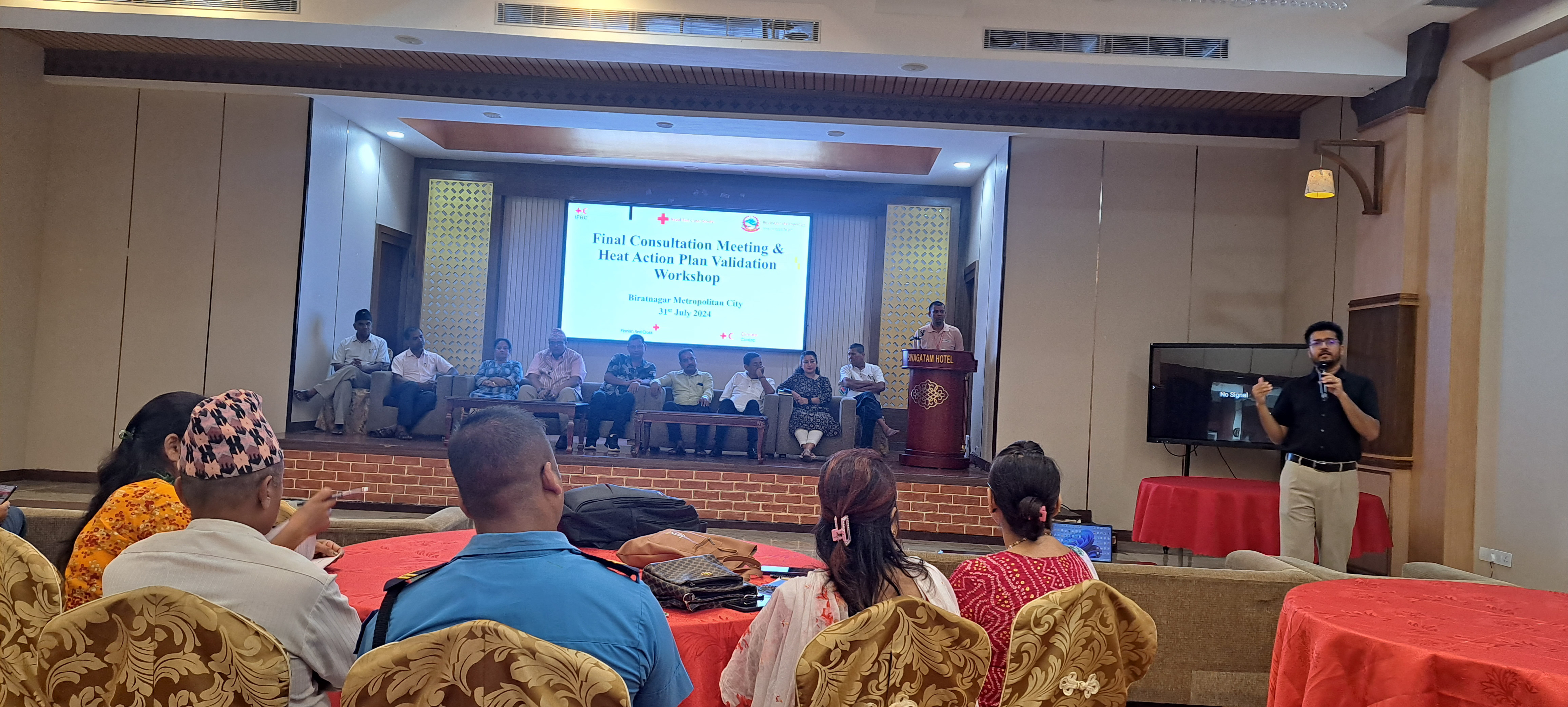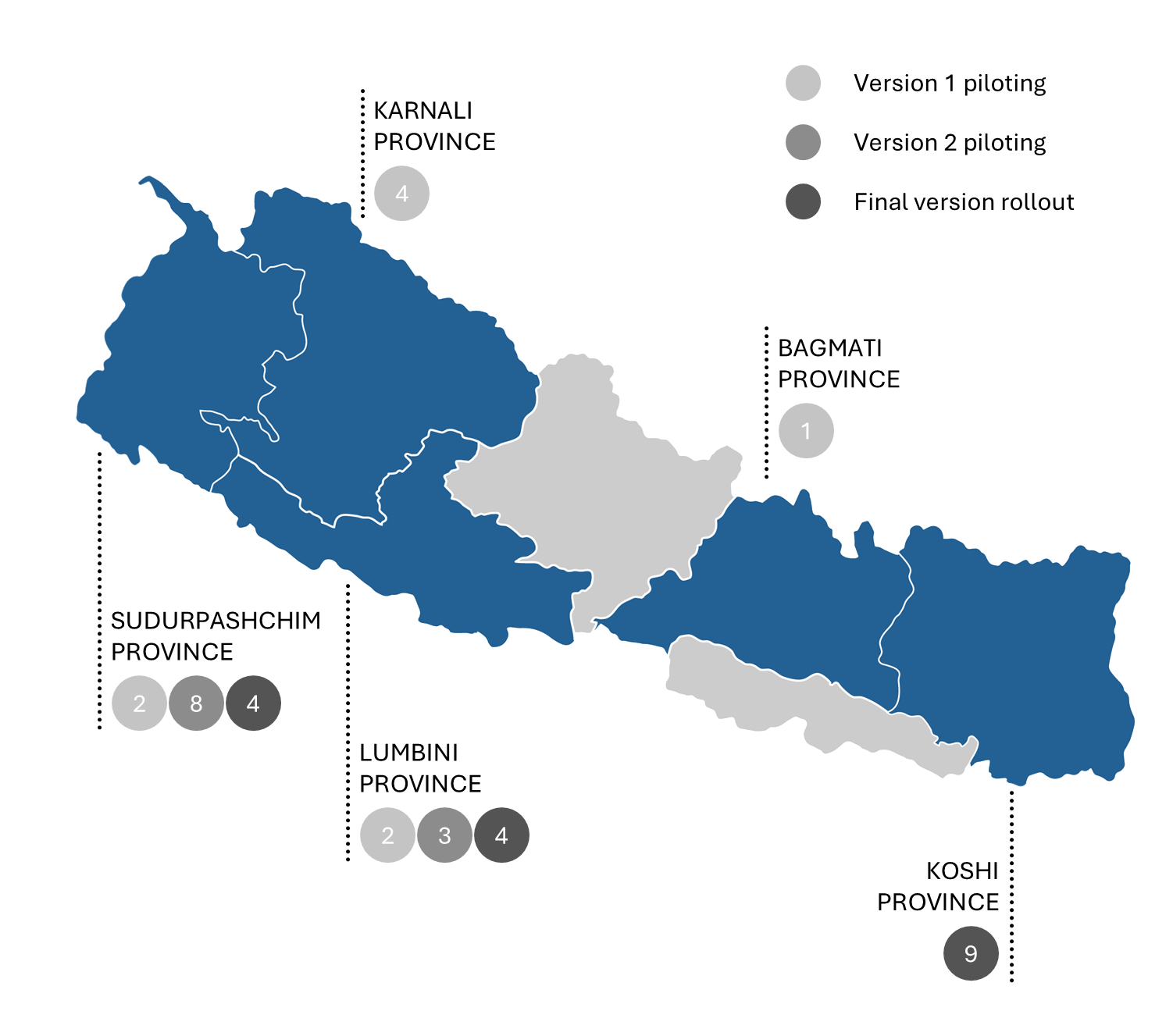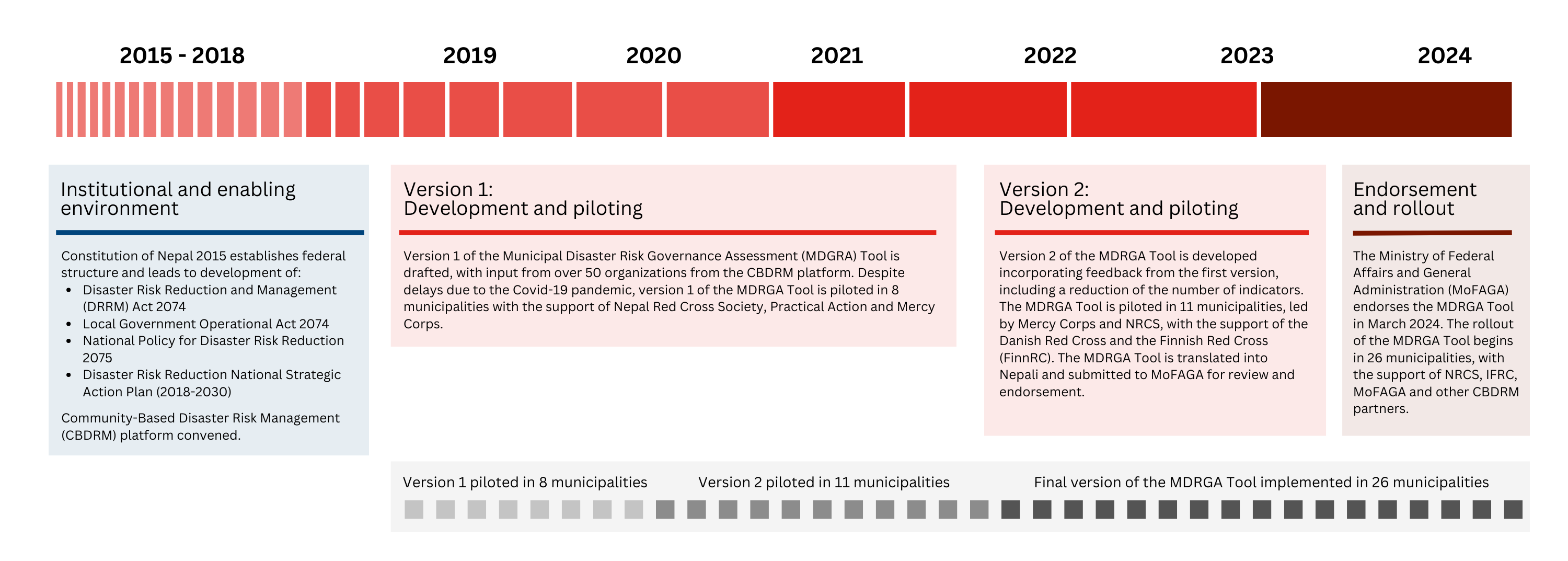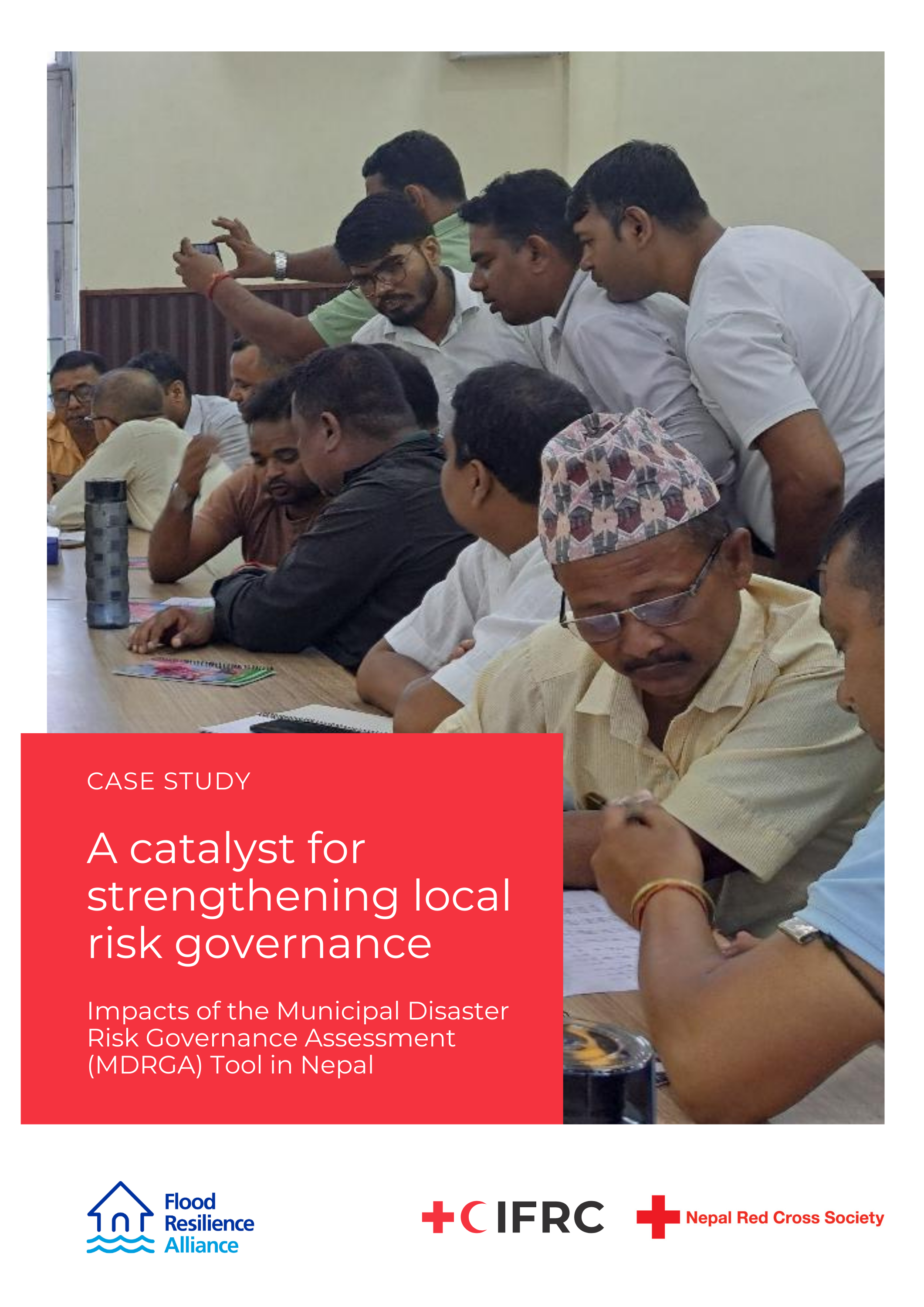
Local Solutions for Local Risks
Disaster risk is most acutely felt—and most effectively managed—at the local level. In Nepal, the rollout of the Municipal Disaster Risk Governance Assessment (MDRGA) Tool is showing how empowering local leadership can lead to systemic change. With the support of the IFRC, Nepal Red Cross Society (NRCS), and partners such as Mercy Corps and Practical Action , the tool is helping municipalities transform risk governance into practical, people-centred action.

How does the MDRGA tool work?
The MDRGA Tool is participatory, context-specific, and action-oriented. It provides a structured framework for assessing risk governance across critical areas such as institutional coordination, risk knowledge, Early Warning Systems, resource allocation, and community engagement. Rather than imposing external solutions, the tool facilitates self-assessment, enabling municipalities to reflect, prioritize, and commit and increase public and private investment in feasible improvements grounded in local capacity and ambition.
"The tool has shown us where our gaps are, what we've already accomplished, and what still needs to be done.” Nirmala Chaudhary, DRR focal point for Tikapur Municipality.
Following federal endorsement, the MDRGA Tool is a tool available to municipalities across Nepal. It helps local governments identify gaps in disaster preparedness and risk governance, prioritize actions, and take ownership of their role in disaster risk reduction (DRR). What’s truly notable is how it’s already improving lives in tangible ways.
From Assessment to Action
The MDRGA Tool has been transformative in shifting disaster risk management (DRM) practices from reactive to proactive. It has broadened local government understanding of their responsibilities, emphasizing early action, risk assessment, and preparedness over a singular focus on disaster response. Municipalities like Tikapur, Punarbas, and Kerabari have used the tool to identify vulnerabilities, prioritize disaster preparedness, and develop long-term strategies. This includes the establishment of dedicated DRM budgets, gender-inclusive guidelines, and strategic action plans.

“Previously, there was no dedicated budget for disaster management, but now we have allocated funds specifically for this purpose.” Toya Prasad Sharma, Mayor of Punarbas Municipality.
The tool has fostered coordination among various stakeholders, promoting collective action to enhance local disaster management. Additionally, the MDRGA Tool has facilitated the appointment of DRR focal points, driving local governments to increase public awareness and invest in community organization. These changes have strengthened disaster preparedness and response at the community level.
"Coordination with the police, community, disaster management team, and the people’s representatives are equally important. It is not only about the budget. It is about coordination and co-working.” Chandra Basnet, Head of the Disaster Department in Kerabari Municipality.
A Model for Risk Governance
Nepal’s experience demonstrates the MDRGA Tool’s unique value: it doesn’t just produce data—it drives action. It motivates local governments, facilitates collaboration, and supports systemic improvements that ripple outward from municipal offices into communities.
For DRR practitioners, it’s a compelling model. Tools like the MDRGA are most effective when locally owned, backed by strategic partnerships, and informed by community priorities.
What’s Next?
As climate and disaster risks intensify, the case for investing in local governance grows even stronger. Nepal’s journey with the MDRGA Tool offers a hopeful and practical example of how risk governance can be transformed—one municipality at a time. When local leaders are equipped, empowered, and inspired, resilience becomes not just a goal—but a reality.
Now is the time for DRR practitioners, policymakers, and partners to take action, and support locally driven solutions like the MDRGA Tool. Whether by adopting similar approaches, sharing lessons learned, or scaling collaborative efforts, we each have a role to play in strengthening risk governance where it matters most—at the community level.
Authors: Bhesh Parajuli | Cale Johnstone | Anil Rai

Read the case study ‘A catalyst for strengthening local risk governance: Impacts of the Municipal Disaster Risk Governance Assessment (MDRGA) Tool in Nepal’ to learn more about the MDRGA tool and its positive impact in Nepal.
---
The development of the Municipal Disaster Risk Governance Assessment (MDRGA) Tool has been led by the Nepal Red Cross Society, IFRC and the Ministry of Federal Affairs and General Administration (MoFAGA), with support from the Zurich Climate Resilience Alliance (2019-2024). Read the program final report and impact brief here.